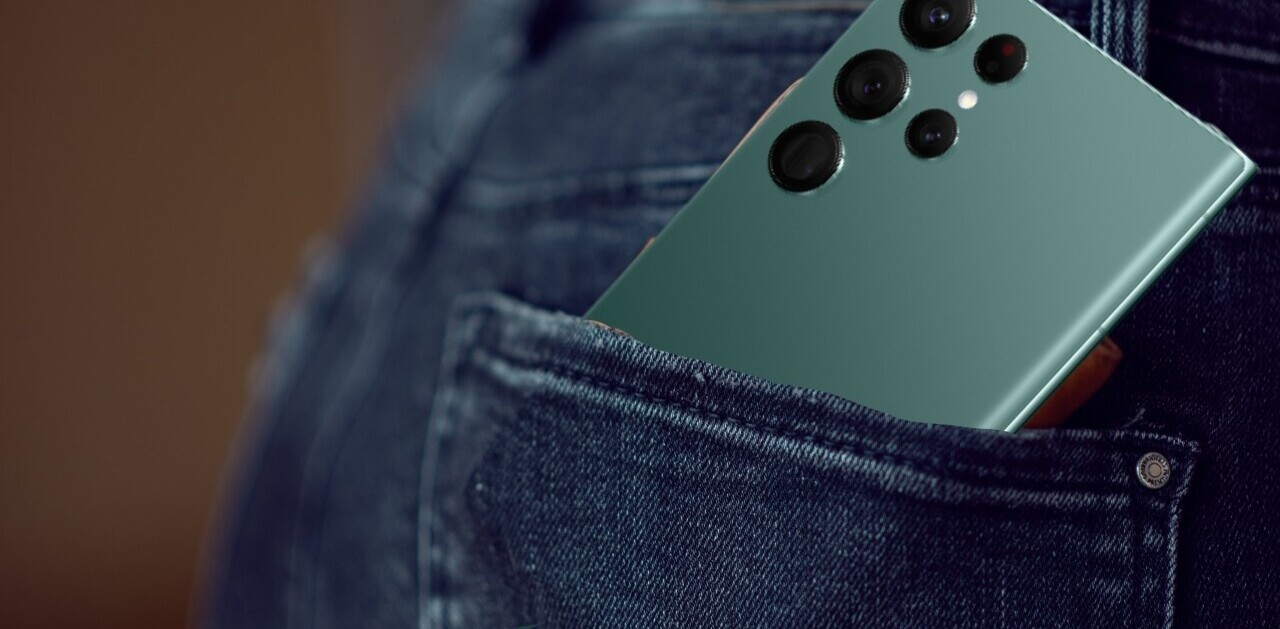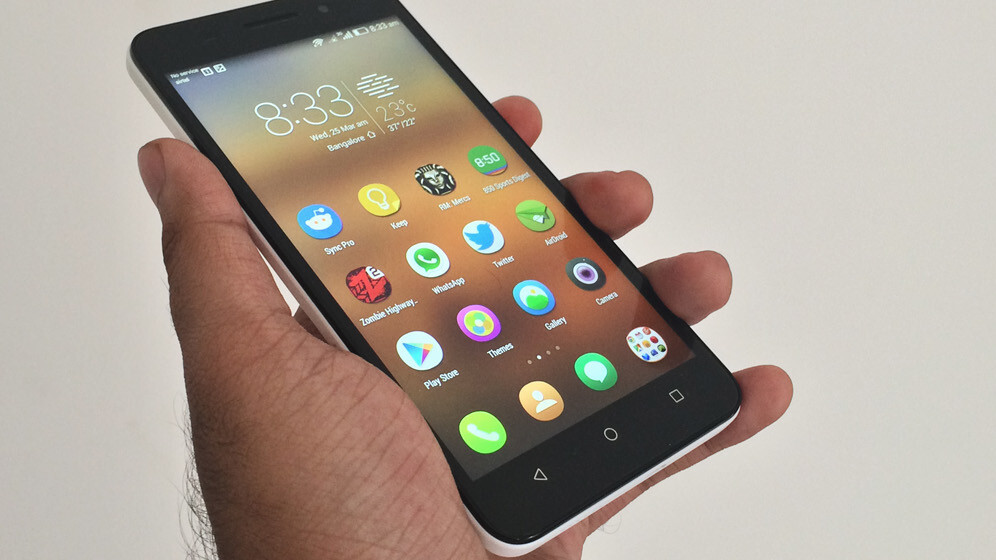
Huawei has been playing its cards right with its Honor brand of smartphones, releasing well-built devices at sensible prices across China, India and Western Europe.
The Holly made for a great entry-level device to rival Xiaomi’s Redmi 1S and the Moto E, while the Honor 6 offered serious competition to the OnePlus One and the Mi 3. With the new 4X, Honor is taking on the mid-range segment with a well-specced phablet that could get a lot of people to try a larger handset.
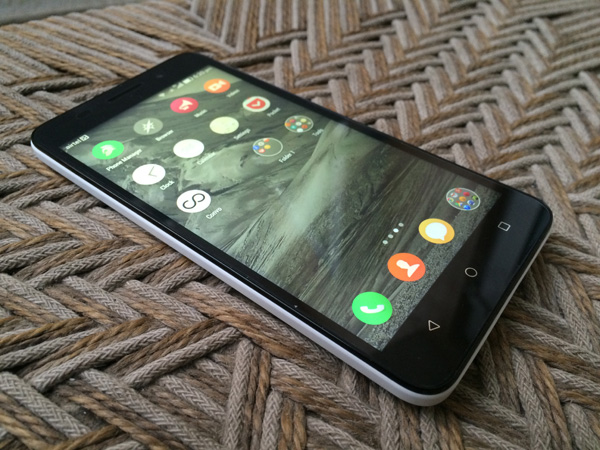
Design and hardware
The 4X tries hard to earn its keep while focusing on what’s important. True, you can tell at a glance that it’s all plastic, but it feels solid enough to take a beating, almost like the Nokia phones of yore. At 170 grams, it’s a tad heavy and weighs a bit more than the OnePlus One and the HTC One M8, but I didn’t mind it too much because it’s easy to grip.
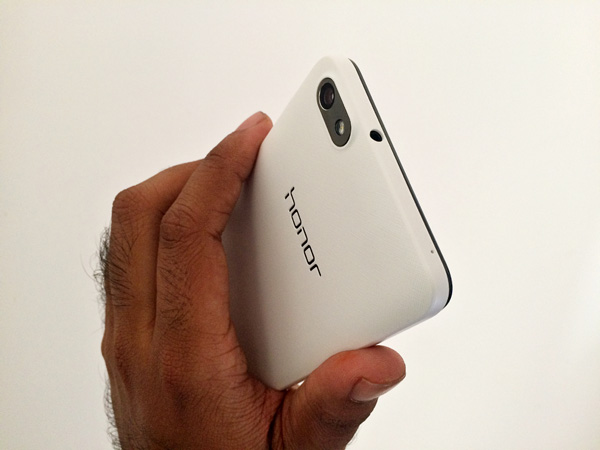
The 4X is almost exactly the same size as the OnePlus One, but won’t turn any heads with its looks. The front panel is as non-descript as it gets and could easily be mistaken for a cheaper phone like the basic Redmi 2. The back, however, features a nice textured finish and a neat camera enclosure. The phone is tough enough to use without additional protection, but a case could certainly help glam it up.
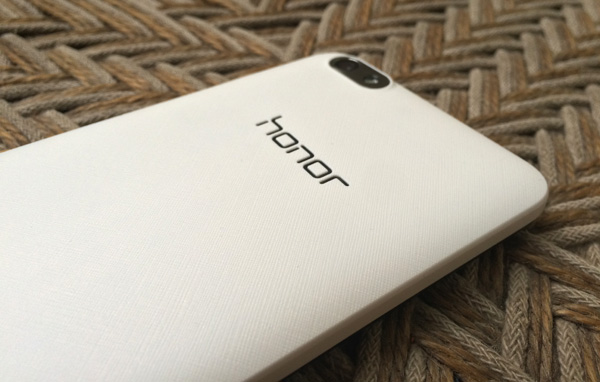
The single speaker located at the bottom doesn’t get too loud or offer much bass output, but it’s clear enough for calls, games and videos. Just don’t expect to start a party by playing music on the 4X.
The volume rocker and power button are all on the right, which is fine — but I’d like to see a little more attention to detail. The power button would have been easier to differentiate had it been textured.

Plus, the speaker and button are placed such that I tend to block the sound while gaming and risk turning off the screen while holding the phone in my left hand to watch videos.
Features and display
The 4X supports dual 4G SIM cards, which means you can enjoy high-speed mobile data and keep your cheap messaging plan too. The SIM management tool lets you choose which one to use for data, calls and texts.
There’s a large 3,000 mAh battery that keeps things humming for hours – I got through a whole day of calls, texts and gaming with about 40 percent of juice to spare.
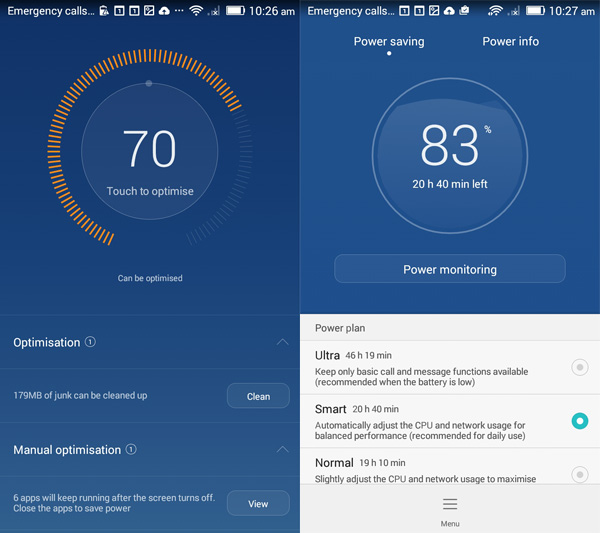
You could probably get even more mileage out of the 4X by using its simple power monitoring and management tools. Just a few taps and you can turn it into a dumbphone to only handle calls and texts for close to 70 hours on a single charge.
The 5.5-inch 720p screen can get nice and bright, and does a good job of reproducing colors. The 267 ppi display, similar to the one on the Redmi Note 4G, is just sharp enough to watch and read on without worrying about being able to differentiate pixels — unless you get up real close and squint. At the end of the day, you’ll benefit more from the additional battery life and lower cost than if you got a sharper 1080p display on this phone.
Software
This phablet runs Huawei’s own Emotion 3.0 UI on Android 4.4.2, without much bloatware. Apart from the custom launcher, menus and a few standard apps like a voice recorder, notepad, FM radio and browser. They’re not all bad — I actually liked the recording app because it supports high quality audio, and the baked-in music player gets the job done.
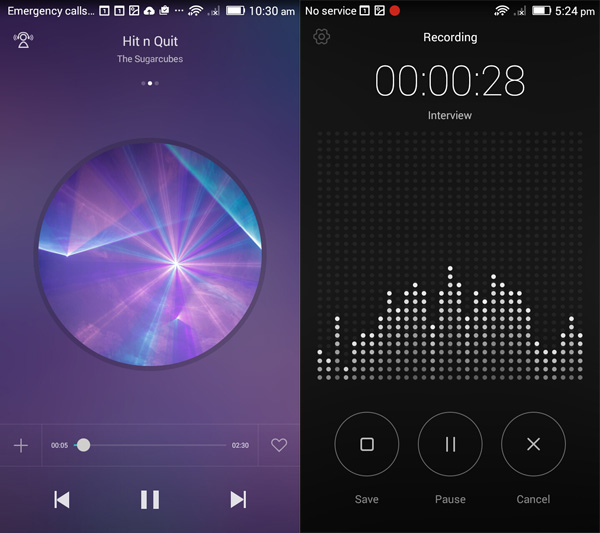
Of course, you’ll see a lot more of Huawei’s ROM in the phone’s settings and widgets. Emotion includes a nice one-hand UI feature that squishes keyboards and dial pads horizontally so you can use them while holding the phone with one hand.
There’s also a powerful Phone Manager app that lets you scan and remove junk files, choose which apps run in the background, block unwanted calls and keep an eye on your data usage.
The built-in launcher eschews the app drawer, likely a reluctant nod to iOS (Xiaomi’s launcher does this too). I’m not a fan of spraying icons all over my home screens, or choosing widgets from a narrow menu at the bottom of the screen, so I default to the flexible Nova Launcher every time I get my hands on a new phone.
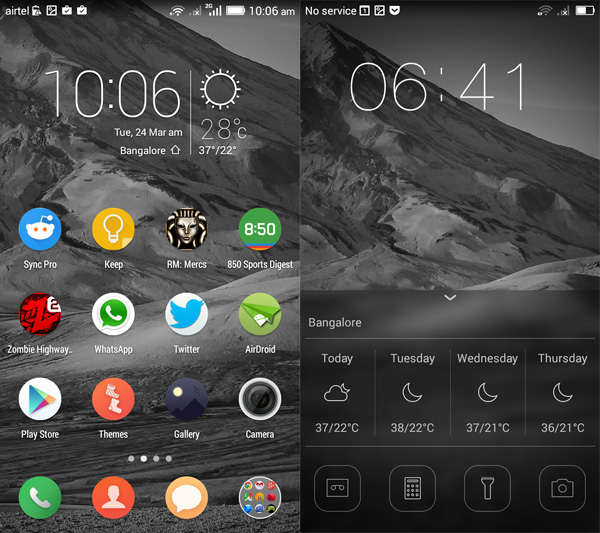
Emotion UI also supports themes that deck out your icons, wallpaper and lock screen in new garb, but there aren’t a lot of them and the few options in the store are a tad dull.
What I do like in this ROM are the notification and settings drawer and the dialer app. When you install a new app and it pushes a notification, you can choose to allow future alerts or mute it thereafter. The dialer, meanwhile, has a nice interface that’s easy to read and use when you’re on a call. Plus, it lets you swipe between calls, contacts and messages from the same screen. Nifty.
Camera
The 4X features a 13-megapixel camera on the back that’s capable of shooting 1080p video at 30fps, and a 5-megapixel snapper in the front that does 720p video. I usually don’t care about megapixel counts, but these are some decent cameras for the asking price.
In the right light, the front camera can take clear selfies with minimal noise. There’s a Beautify function to smoothen features, but I’d recommend using it on a low setting or not at all, as it tends to smudge lines when given the chance.

The rear camera does a good job of capturing detail and color. It’s quick to snap standard shots, and takes about a second for HDR images. The results are nice and sharp, but highlights tend to get blown out fairly easily.
In low light, it’s a little less faithful when it comes to reproducing color, but it does the job without requiring you to stand still endlessly.

The camera app itself is fairly basic — you can only control the focus, turn on HDR and switch to Panorama mode. You can also apply filter previews while shooting, but they’re low on variety and can overpower your pictures. However, the app is lightweight and lets you shoot quicker than on the OnePlus One.
The gallery app allows for basic editing, with standard image controls like brightness, contrast, sharpness and so on. What I liked here was the collection of filters – they’re much nicer than the ones in the camera app.
Performance
Under the hood, the 4X packs a Snapdragon 410 quad-core 1.2GHz processor paired with an Adreno 306 GPU. There’s 2GB of RAM and 8GB of onboard storage, with a MicroSD slot to expand memory.

The 4X is no slouch when it comes to everyday tasks like browsing, taking pictures, watching videos and editing documents. Switching between the home screen, settings, and apps felt smooth and lag-free. It runs most games just fine, but the graphics quality takes a hit on newer titles like Zombie Highway 2.
The bottom line
Honor’s 4X is now on sale in India for Rs. 10,499 ($168), and it offers a whole lot at that price. Sure, the OnePlus One blows it out of the water in terms of gaming performance and a better OS experience, but it does so at double the cost.
This is a no-frills device that’s fairly well built and offers great battery life, as well as a large screen to comfortably consume content. It’s also relatively bloat-free. Honor says the 4X will get monthly OTA updates for the first six months, followed by quarterly updates — so hopefully we’ll see it running Android Lollipop in the near future.
At this price, you’d be hard-pressed to find a better phablet. If you’re on a budget but want to upgrade to a bigger phone, be sure to take the 4X for a spin.
➤ Honor 4X
Get the TNW newsletter
Get the most important tech news in your inbox each week.





